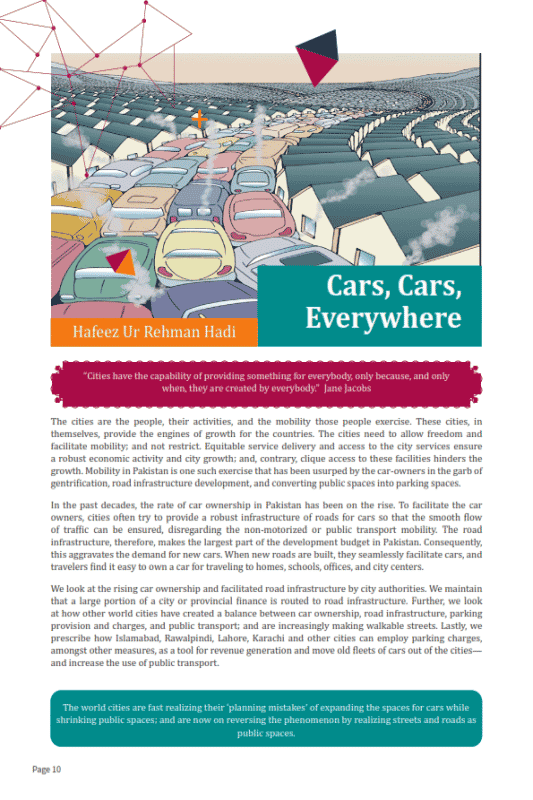Cars, Cars, Everywhere
The cities are the people, their activities, and the mobility those people exercise. These cities, in themselves, provide the engines of growth for the countries. The cities need to allow freedom and facilitate mobility; and not restrict. Equitable service delivery and access to the city services ensure a robust economic activity and city growth; and, contrary, clique access to these facilities hinders the growth. Mobility in Pakistan is one such exercise that has been usurped by the car-owners in the garb of gentrification, road infrastructure development, and converting public spaces into parking spaces. In the past decades, the rate of car ownership in Pakistan has been on the rise. To facilitate the car owners, cities often try to provide a robust infrastructure of roads for cars so that the smooth flow of traffic can be ensured, disregarding the non-motorized or public transport mobility. The road infrastructure, therefore, makes the largest part of the development budget in Pakistan. Consequently, this aggravates the demand for new cars. When new roads are built, they seamlessly facilitate cars, and travelers find it easy to own a car for traveling to homes, schools, offices, and city centers. We look at the rising car ownership and facilitated road infrastructure by city authorities. We maintain that a large portion of a city or provincial finance is routed to road infrastructure. Further, we look at how other world cities have created a balance between car ownership, road infrastructure, parking provision and charges, and public transport; and are increasingly making walkable streets. Lastly, we prescribe how Islamabad, Rawalpindi, Lahore, Karachi and other cities can employ parking charges, amongst other measures, as a tool for revenue generation and move old fleets of cars out of the cities— and increase the use of public transport.




